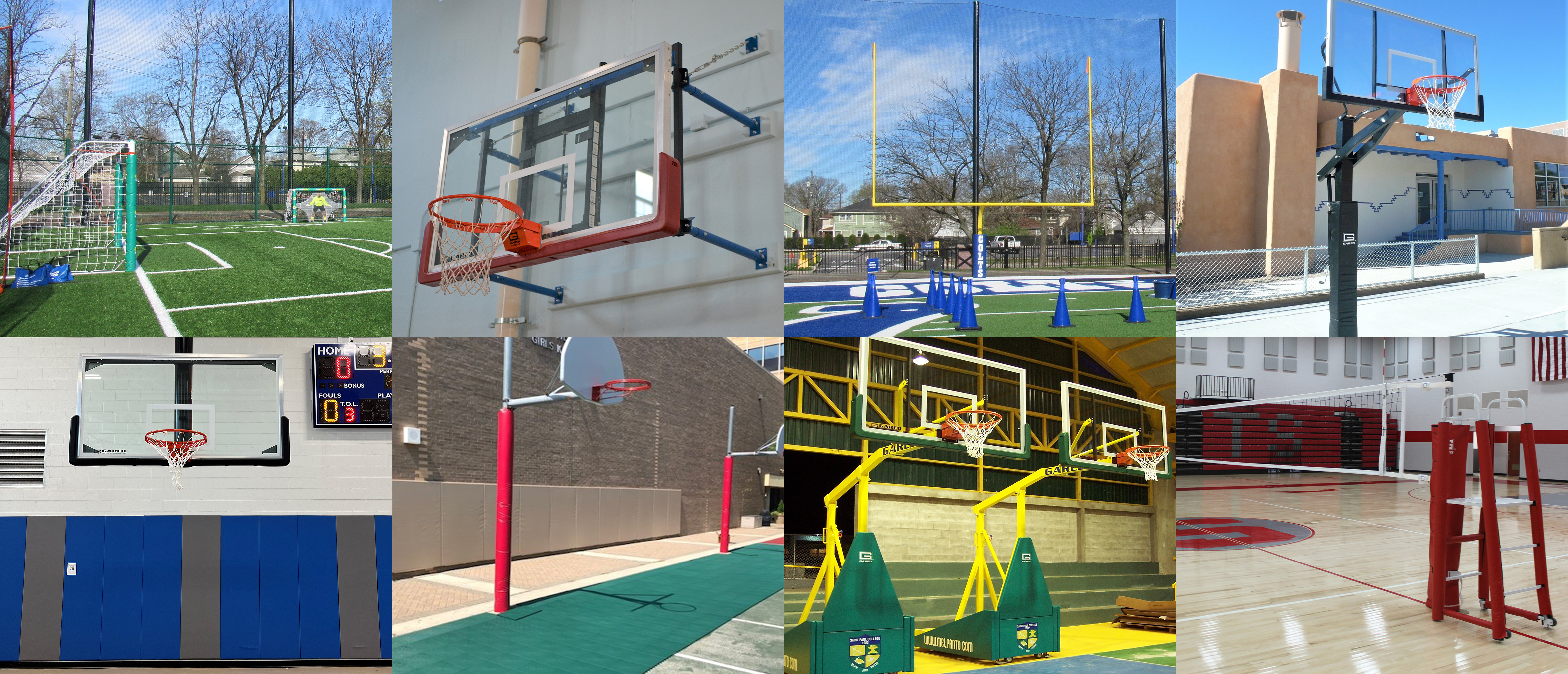Covering your team sports equipment in protective padding is one of the easiest and most cost-effective ways to make your indoor facility or outdoor field safe for players! In addition to preventing injuries, padding is required for equipment used for official play for many sports. Ideally, padding should cover any surface where athletes could potentially make contact with equipment, but not interfere with the game itself. A good rule of thumb is to use thicker, more durable pads for high-contact sports, heavy play settings, or where an impact point is located close to the equipment (e.g., wall behind a basketball hoop). For outdoor applications, look for UV and mold-resistant vinyl that will withstand moisture and resist fading in the sun.
Not sure if your facility is equipped with adequate padding? We’ve got you covered with this checklist of recommended padded equipment by sport!
Basketball
Metal-framed backboards should always be padded to prevent head or hand injuries. In fact, NCAA and NFHS rules state that edge padding must cover boards used during competition basketball play. Bolt-on backboard pads provide the most secure and durable means of covering board edges. Other board materials such as steel or fiberglass may be able to accept adhesive-type padding, depending on the manufacturer. Most portable basketball systems will include padded bases, and high-competition portables will include at least 4" thick pads surrounding the unit base. In addition, the walls of indoor basketball facilities should be covered with standard 6' tall, 2" thick padding, especially if any walls or columns are located directly behind basketball hoops. For outdoor basketball settings, inground posts such as gooseneck and straight posts should always be covered with at least 2" thick padding, and surface-mounted posts should have a pad that covers mounting bolts to prevent tripping and foot injury.
Volleyball
For indoor or outdoor volleyball play, any post type should be always have padding on it. This includes portable bases, sleeved posts, inground posts, and ceiling-hung systems. For competition play, a minimum of 1-1/2" thick, 6' tall padding is required. Referee stands should also be covered with padding to protect players.
Soccer
Padding is typically recommended for covering soccer goal uprights, but it is not required for competition play. NFHS rules do state that if soccer goals include pads, they must be no more than 1" thick, with a minimum height of 72". The pad color must be white, with only the manufacturer's logo present on the pad.
Football
As with soccer, football goalposts should be covered with padding due to the high-contact nature of the sport. There are no official requirements for high school or collegiate play; however, most facilities opt to cover them with at least 4" thick padding on the main post where body contact may occur.

